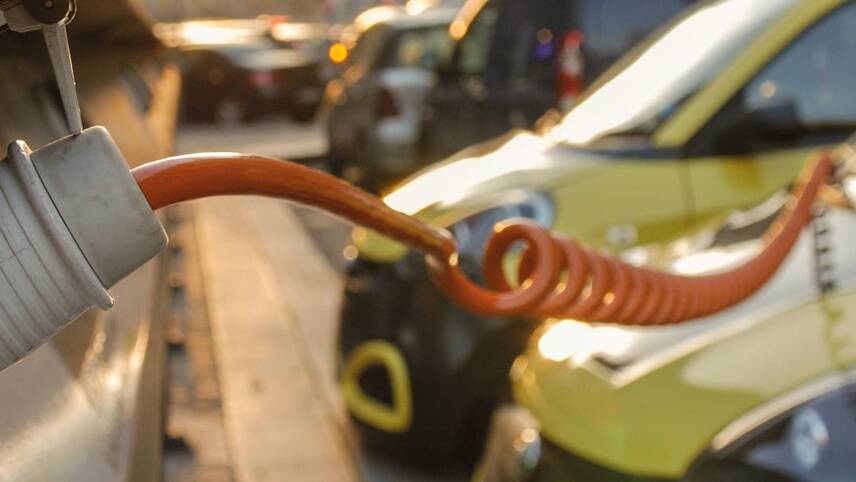You’ve reached your limit!
To continue enjoying Utility Week Innovate, brought to you in association with Utility Week Live or gain unlimited Utility Week site access choose the option that applies to you below:
Register to access Utility Week Innovate
- Get the latest insight on frontline business challenges
- Receive specialist sector newsletters to keep you informed
- Access our Utility Week Innovate content for free
- Join us in bringing collaborative innovation to life at Utility Week Live

A survey by the newly formed Electric Vehicle Association (EVA) England has revealed EV drivers are unhappy with the state of the country’s public charging infrastructure.
The survey, which was commissioned in response to the government consultation Consumer experience at public electric vehicle chargepoints, polled more than 1,200 drivers in total, of which 1,025 were from England.
Of English drivers, 96 per cent indicated they were drivers of battery electric vehicles (BEVs) with the remaining 4 per cent saying they were drivers of plug-in hybrid electric vehicles (PHEVs).
Participants were asked to what extent they were satisfied with the current state of public charging infrastructure. The average satisfaction rating amongst drivers in England was just 2.16 out of 5.
Overall 43 per cent said they were somewhat dissatisfied while almost a quarter (24 per cent) said they were extremely dissatisfied. More than a quarter (26 per cent) were neither satisfied or dissatisfied while 6 per cent were somewhat satisfied and just 1 per cent very satisfied.
EVA England added that the intention of the question was to establish a benchmark for satisfaction against which improvements could be measured.
Furthermore, 99 per cent of drivers said a reliability standard for charges should be set, with 86 per cent saying they have had to choose a different chargepoint than the one they originally intended to use due to reliability issues.
More than half (62 per cent) disagreed or strongly disagreed that public chargepoints are typically in good working order. Only 14 per cent said they found chargepoints in good working order.
A frequent source of consternation for drivers was the topic of “ICE-ing”, where an internal-combustion-engine (ICE) vehicle (i.e. a petrol or diesel car) blocks access to a chargepoint. Some respondents suggested penalties should be imposed for blocking chargepoints or called better enforcement of existing penalties to ensure reliable access.
Based on the survey results, EVA England has made the following recommendations to government:
- Chargepoints should offer a choice between three standardised payment methods: a contactless credit or debit card; a ‘universal’ charge card (RFID); or a smartphone app
- The government should mandate that chargepoint operators enable roaming and allow for drivers to use one app or RFID card on all networks
- Government should mandate a minimum amount of data that must be made open in a standardised format to EV drivers to better equip them to plan their charges along the public network
- All prices for electricity sold at EV charging sites should be stated in pence/kWh
- Government should work with the EV chargepoint industry to establish a roadmap to mandate 99 per cent reliability and 24/7 helpline availability within agreed timescales
- Standardised signage should be increased in terms of both number and visibility at the site of chargepoints as well as on a range of approach roads
Gill Nowell, a director at EVA England, said: “With automotive manufacturers, fleets and businesses all now choosing to go electric, we need to improve the consumer experience at public chargepoints to take EV adoption mainstream.
“Based on the outputs of this survey, paving the road for the mass adoption of EVs looks like contactless card payments, roaming, consistent chargepoint reliability, simplified billing, and easy access to information about what chargers are where.
“We recognise that the pace of chargepoint deployment is increasing and that the infrastructure going in the ground today is greatly improved from that which was being installed even five years ago. However, we encourage government to intervene now in order to ensure that all charging infrastructure is reliable, safe and user-friendly, across all driver groups.”
Honda e:Progress
Elsewhere in the sector, Honda has launched an advanced intelligent home EV charging system called e:Progress for Honda e drivers.
The system, developed with Octopus Energy and Moixa, uses the latter’s GridShare platform with Octopus’ Agile tariff. GridShare autonomously selects the most cost-effective times to charge on the tariff while ensuring that the Honda e is always adequately charged.
Installation of the chargers is carried out by British Gas.
Simon Daniel, chief executive of Moixa, said: “As we build back better, the world will see an exponential rise in electric vehicle adoption.
“All car manufacturers must electrify within this decade, and intelligent battery management software like GridShare is essential to ensure that EV uptake not only brings financial benefits to the driver, but also supports balancing the increase in demand of energy from the grid.”
Jørgen Pluym, general manager of Honda’s Energy Solutions division, said: “Intelligent charging is supporting the transition to electric vehicle ownership by enabling customers to benefit from lower-priced clean energy.
“Moixa’s expertise is helping to bridge the gap between the automotive and energy industries to offer advanced energy solutions such as e:progress, and we look forward to a continued successful partnership as we bring further services to market in the coming months.”




Please login or Register to leave a comment.